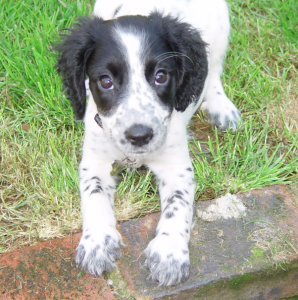News
Parvovirus – a Returning Disease?
by on September 2nd, 2013
Category: News, Tags:
 There have been many recent cases of parvovirus in the UK
There have been many recent cases of parvovirus in the UK
Canine parvovirus is an extremely contagious disease which was first described in the 1970s. When the disease emerged, thousands of dogs died after infection, before an effective vaccine was produced. Although reliable vaccines have been used for many years, there have been several recent instances where vets have seen more clinical cases than they would usually expect , suggesting that the general immunity level is waning and that not all dogs are receiving vaccination on a regular basis. Parvovirus is a killer disease that is preventable – if you are in any doubt about your dog’s immune status please ask your vet for advice.
The parvovirus preferentially attacks dividing cells including those that form the lining of the digestive tract, and this leads to the commonly seen clinical signs of vomiting, profuse diarrhoea, dullness and depression.
How does it spread?
The parvovirus is passed out in the faeces of infected dogs and contaminates the environment. If the dog survives and recovers, infectious virus is still passed out in the faeces for several weeks. Other dogs are infected by ingestion of the infectious material, either from contamination of the environment or direct contact with an infected dog. Virus is also excreted in vomit as well as faeces, and can persist on an infected dog’s feet and coat and be transmitted in this way. Contaminated hands of owners, bedding, feeding bowls and toys can also play a part in transmission. After infection there is an incubation period of 4 – 7 days before signs of illness are seen.
Clinical Signs of Infection
Parvovirus can affect dogs of all ages, but puppies are most susceptible to the disease. Signs of illness seen after the incubation period include vomiting, diarrhoea, depression and abdominal pain. Diarrhoea is usually profuse and often contains blood. A fever may be present but is not always a feature of the condition. Due to the vomiting and diarrhoea, the dog rapidly becomes dehydrated and if untreated at this stage it may well die.
Treatment
Diagnosis of parvovirus requires veterinary testing. There is no specific treatment for infected dogs but supportive therapy is essential for any chance of survival. This includes fluid therapy with intravenous fluids and often intensive nursing. Isolation is essential to prevent spread of the disease to susceptible individuals. Antibiotics are usually administered to prevent complications such as septicaemia, which are a recognised cause of death in these patients.
Outlook
This depends on the level of infection and the individual dog’s response to it, as well as the stage at which the disease is diagnosed and treatment is commenced. Many dogs will make a good recovery with sufficient veterinary care.
Prevention
Parvovirus can be prevented by following your vet’s recommended vaccination programme. As pups are the most susceptible to the disease, it is very important to take your new pup to your vet for a check and to get them started on their vaccines. They will need at least 2 injections separated by 2 or 3 weeks for their primary course – the exact number depends on the brand of vaccine that is used by your practice and the recommendation of the vaccine manufacturers.
Boosters may be given one year after the puppy course, and after this the interval depends on the vaccine being used.

